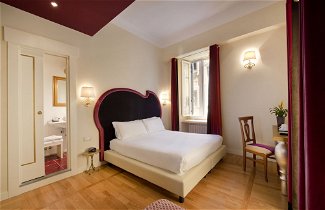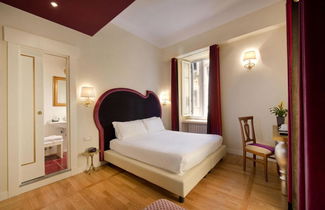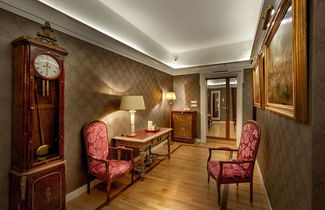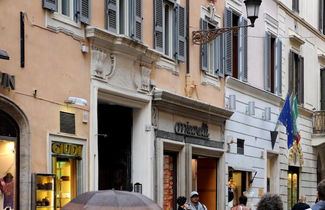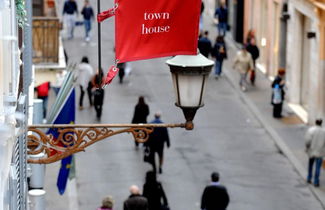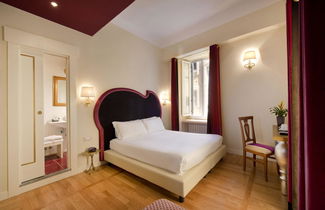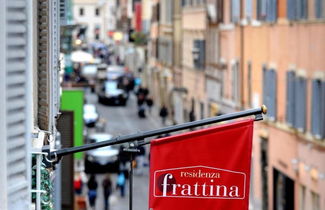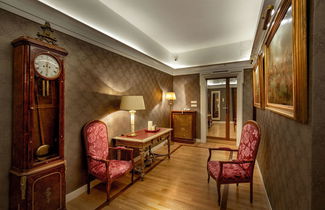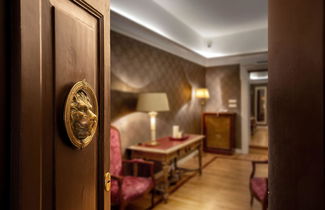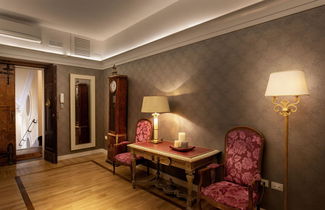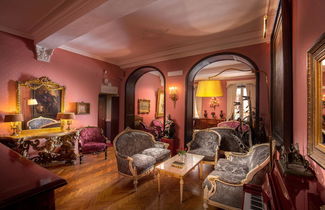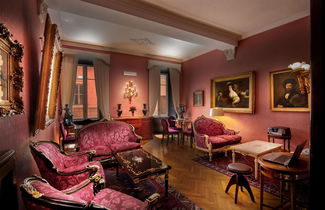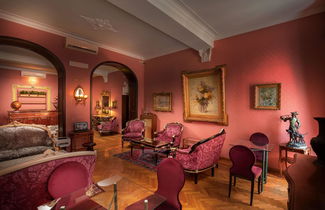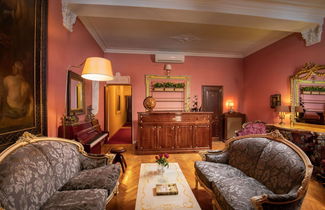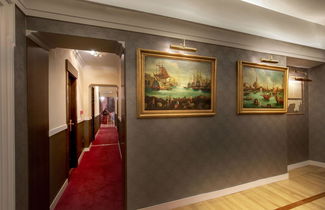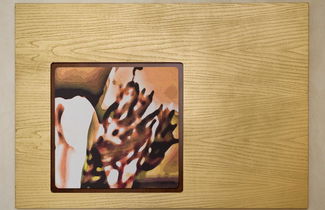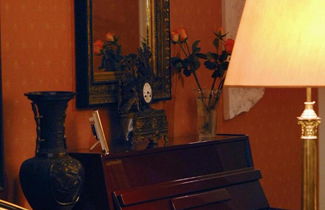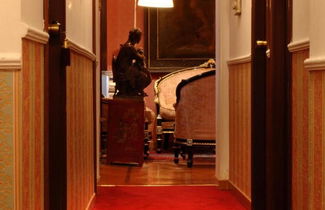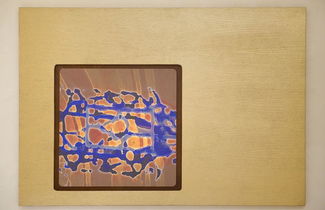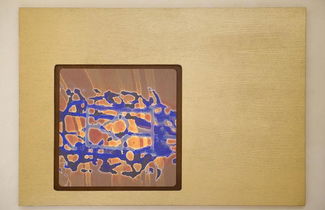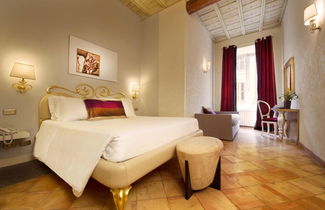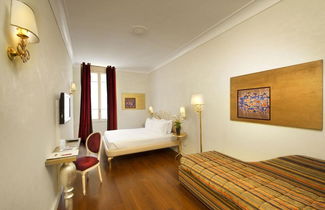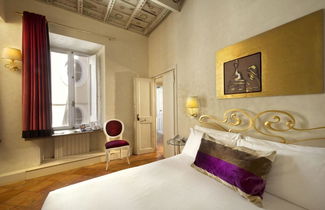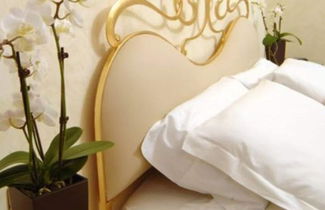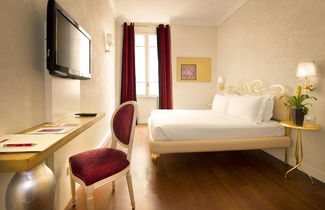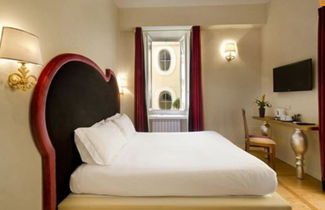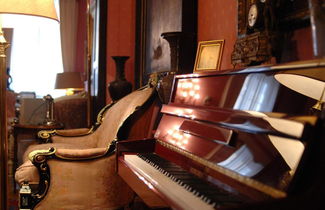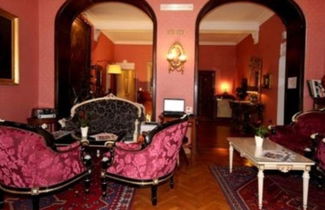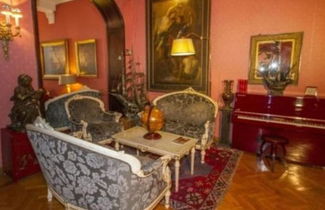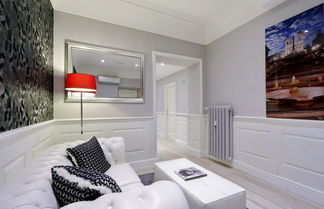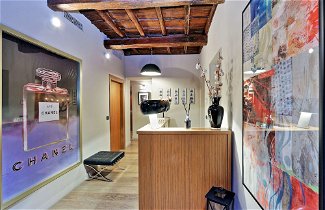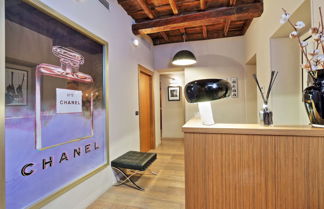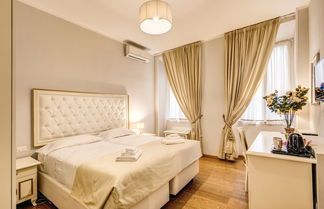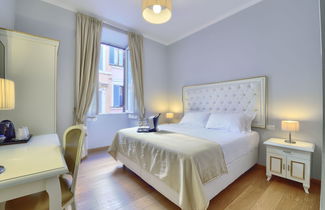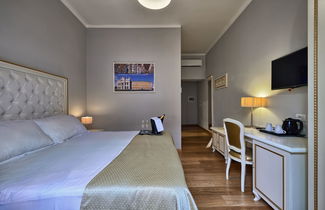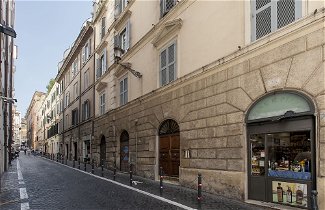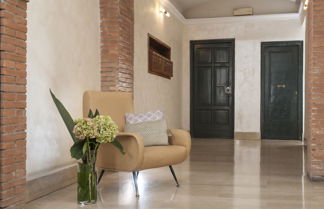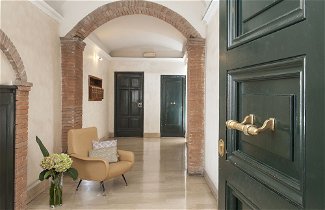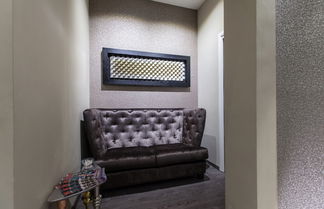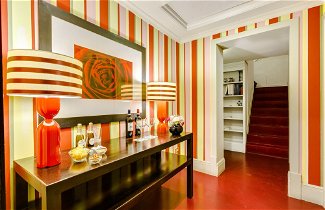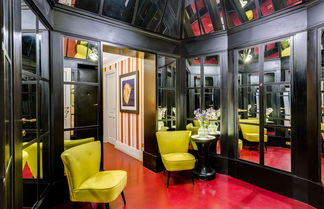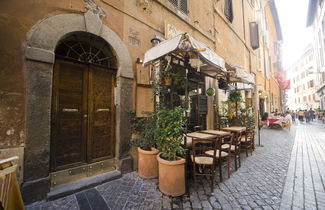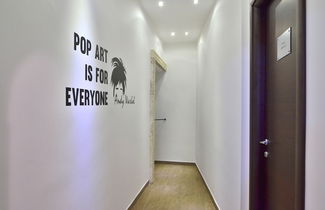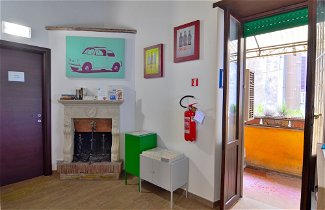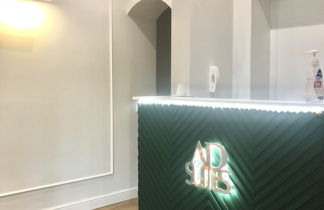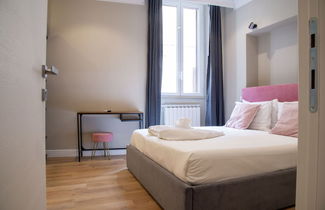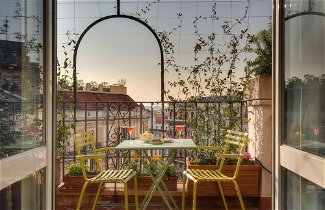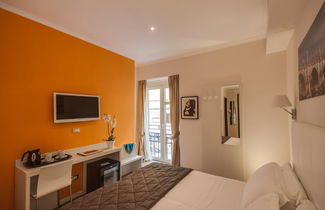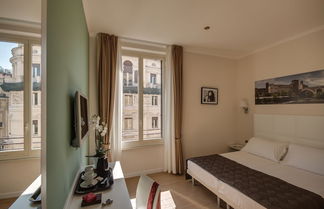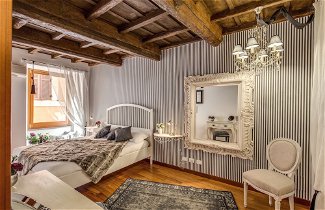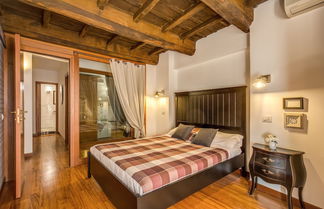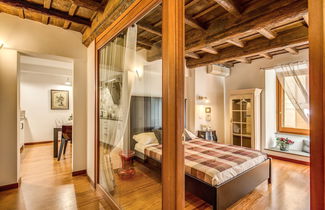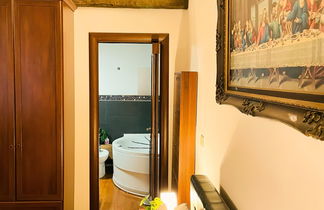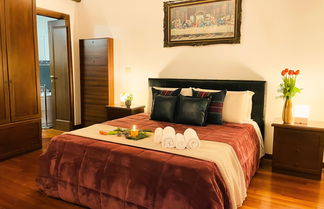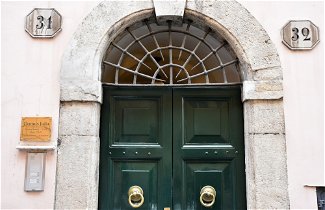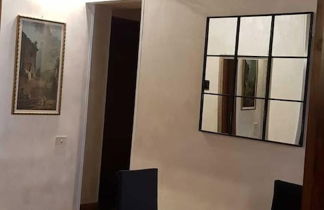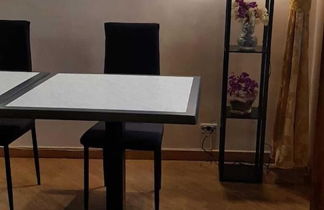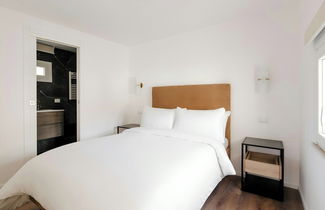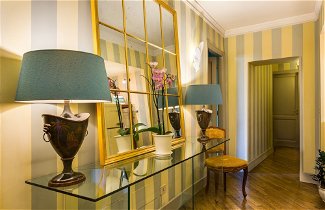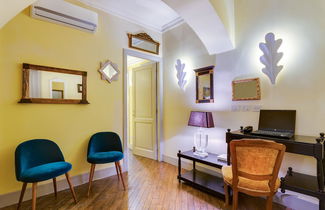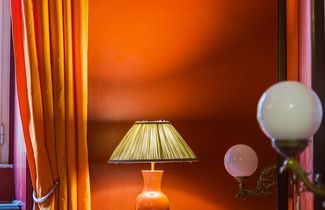Apartments close to the Trevi Fountain Area: Central Accommodation
Who doesn't remember the sensual Anita Ekberg going into the water of the Trevi Fountain while Marcello Mastroianni watched her, spellbound, in the 1960 Federico Fellini film La Dolce Vita? This Italian Baroque fountain was, however, built for more practical reasons in the 15th century. It signaled the fact that water was arriving at the end of the Roman aqueduct, Aqua Virgo. Initially, it was an unsophisticated construction. It was only in 1730 that Pope Clemente XII organized a competition to select the person who would build the fountain. The fountain has the Palazzo Poli as its backdrop. Okeanos is in the central niche, the Statues of Abundance and Health are at the sides and there are two tritons guiding Okeanos's chariot on marble rocks that give the construction an aura of the sea. It took thirty years to build and the architect, Nicola Salvi, died before finishing the construction. Giuseppe Pannini subsequently continued working on it. Unfortunately, the passage of time and pollution damaged the fountain, and an ongoing maintenance process began in the 1990s. People feared the worst because of the damage the fountain had already suffered, and the consequent high renovation costs. In 2014, a private entity took charge of the renovation work. Last year, the fountain reopened, to the delight of both the people of Rome and visitors alike. The name "di Trevi" comes from the Italian word for "three roads" as its location was the point where three streets met. Today, it is the area with the best accommodation in central Rome. Traditionally, you throw coins into the fountain over your left shoulder, which is supposed to ensure your subsequent return to Rome. Be sure to do it for your luck when you try to rent one of our apartments in the Trevi Fountain Area.
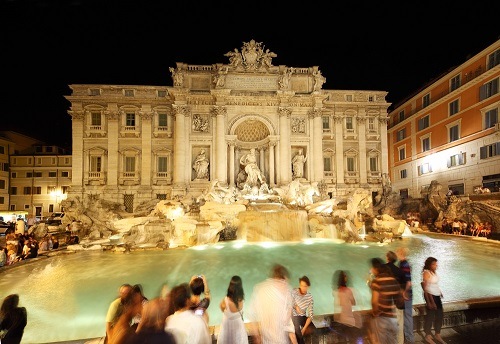
Like all monuments, the Trevi Fountain has many stories. It is said that Carlota of Mexico drank water from the fountain after visiting Pope Pius IX. She was sure that people were trying to murder her and that the only safe water was the water in the Trevi Fountain.
Its beauty reached the cinema via great film directors. In 1954, a scene in Three Coins in the Fountain was filmed here. In 1960, Fellini shot the most famous scene in global filmography, thus turning La Dolce Vita into a classic.
Another curious fact relates to the amount of money that is raised each year by those who work collecting the coins that are thrown into the fountain. It is said that the amount of money increases each year. Currently, approximately one million euros are collected from the fountain, which are invested in charitable work.
Accommodation in the Trevi Fountain Area:
Passageways, corners and remote alleyways surround the Trevi Fountain. It is a captivating scene that is a delight for the senses, as is the accommodation. There are hotels of incomparable charm, although remember that the prices in the area are high. Tucked among the flower-laden balconies and majestic entrances are many studios, apartments, flats and B&Bs. They are all well designed and are completely suitable to rent for days or weeks. You can also find cheap hostels a bit further away from the city center; it is just a question of finding the option that suits you best.
Places Close to the Trevi Fountain
The area is made up of medieval buildings and the majority of its attractions are the churches and palaces located in the small streets.
- The Quirinal Palace, the sixth largest palace in the world is not far from the Trevi Fountain. It covers an area of 110,500 square meters. It has been the residence of popes and kings and it is the official residence of the Italian heads of state.
- The 15th century church of Santa Maria in Via is in the Fontana area, on the corner of Via del Tritone. It is a work of art when it comes to medieval architecture and is home to both stories and secrets, like all of the neighboring streets.
- Just like the church, Santa Maria in Trivio is also located close to the Trevi Fountain, on the Piazza dei Crociferi. It is an interesting building - inside you can see beautiful sacred images. It is part of the area's medieval architecture circuit.
- Amongst the noteworthy Baroque buildings in the area you can find the Santi Vincenzo e Anastasio a Trevi church. It is close to the Quirinal Palace and the Trevi Fountain. The altar is beautifully decorated with Byzantine iconography, which is typical of the Orthodox Catholic church.
- The Column of Marcus Aurelius is a monument that dates back to the year 176, and it was built in memory of Emperor Marcus Aurelius' victories. The column imitates Trajan's Column and is mounted on a base that is very close to the temple dedicated to Marcus Aurelius. It is an interesting construction that displays the might of the Roman Empire.
- One recommendable route goes along Via di San Vincenzo to the Trevi Fountain, and then on to the Via Arcione. This area is full of bars and restaurants where you can have an aperitif and be delighted by the Italian cuisine.
- Rome is a city that invites you to familiarize yourself with it by walking around and enjoying the sights, as well as taking a rest when the time is right. Our apartments in the Trevi Fountain area are the perfect accommodation and are close to all amenities located in the city center of Rome.
How to Get to the Trevi Fountain
Leonardo da Vinci Airport (Rome-Fiumicino) is 32 kilometers away from Termini Station. Buses leave every 20 minutes; the trip takes 30 minutes and costs €4. At Termini you can take a taxi or the No.85 bus, and get off at the Tritone/Fontana di Trevi stop. Taxis from the airport in Rome cost €48 and you can catch them opposite Departures. There are also many car rental companies at the airport, which is a good alternative when visiting all the secrets that a city as interesting as Rome has to offer.
